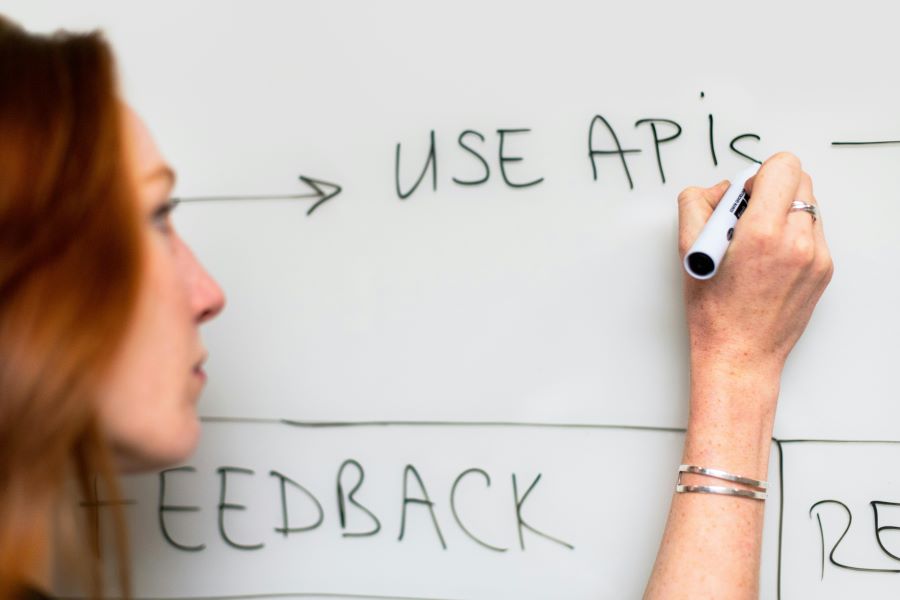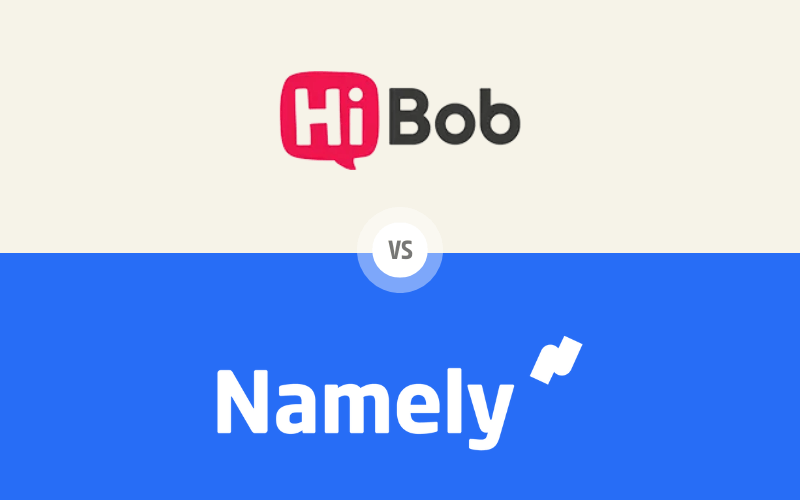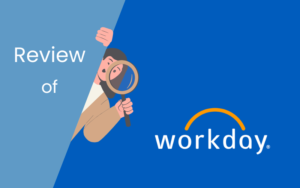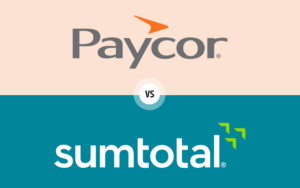When comparing Hibob vs Namely, it’s crucial to understand how each Human Capital Management (HCM) software stacks up across various key areas. Both Hibob and Namely offer comprehensive HR solutions, but they cater to different business needs and sizes. In this blog post, we’ll dive deep into a detailed comparison of Hibob and Namely, covering essential aspects such as user interface, core HR functions, payroll management, time and attendance tracking, benefits administration, performance management, talent management and recruiting, learning and development, reporting and analytics, compliance and security, integration and compatibility, customer support and service, pricing and cost-effectiveness, and user reviews and testimonials. By the end, you’ll have a clear understanding of which platform is the best fit for your organization.
Table of Contents
User Interface and User Experience
When comparing Hibob vs Namely, understanding the nuances of their user interface (UI) and user experience (UX) is essential. Both platforms aim to enhance HR workflows but do so with distinct design philosophies and functionalities tailored to different organizational needs.

Hibob User Interface and User Experience
Hibob is celebrated for its modern and aesthetically pleasing interface that champions user-friendliness. The platform’s intuitive dashboard simplifies navigation, enabling quick access to its various features without a steep learning curve. Customization is a cornerstone of Hibob’s design, offering HR teams the flexibility to adapt the interface to their specific operational requirements.
Key Features of Hibob UI/UX:
- Customization: The dashboard can be personalized with widgets and shortcuts, which streamlines daily tasks and boosts efficiency.
- Visual Design: Hibob employs vibrant colors and sleek graphics to create an engaging user environment that is not only functional but also visually appealing.
- Ease of Use: Designed with user intuitiveness in mind, Hibob reduces complexity, enabling new users to adapt quickly with minimal training.
Namely User Interface and User Experience
Namely offers a comprehensive and adaptable UI/UX, which caters to medium and large organizations with complex HR needs. Despite its extensive functionality, Namely manages to maintain a user-friendly experience by structuring its features in an organized and accessible manner. It combines robust functionality with customization options to meet diverse HR demands.
Key Features of Namely UI/UX:
- Functionality: Namely delivers a broad array of features that support intricate HR management tasks without compromising on ease of use.
- Navigation: The interface is thoughtfully organized to ensure that users can efficiently locate tools and information, enhancing productivity and user satisfaction.
- Customization: Extensive dashboard customization allows organizations to modify the platform to better align with their workflow and user preferences.
Comparison and Conclusion
Choosing between Hibob and Namely hinges on understanding their respective strengths and how these align with your organization’s requirements. Hibob shines in scenarios where a visually striking, straightforward, and highly adaptable interface is pivotal. It appeals particularly to smaller and mid-sized companies seeking a balance between aesthetic appeal and functional simplicity.
Namely, on the other hand, is well-suited for larger organizations that require a robust and comprehensive system capable of managing complex HR activities. It offers depth in its features and customization, making it a robust tool for businesses needing a more extensive HR framework.
The decision between Hibob vs Namely should consider:
- Organizational Size and Complexity: Smaller companies might prefer Hibob for its simplicity and ease of use, while larger organizations may opt for Namely for its expansive features and customization capabilities.
- User Engagement and Training: Hibob’s intuitive design requires less training, whereas Namely, although user-friendly, might require a bit more orientation due to its comprehensive nature.
- Customization Needs: If your HR team needs a highly customizable interface to fit varied operational styles, Namely offers greater flexibility, whereas Hibob provides essential customization with a focus on user-friendliness.
Ultimately, the choice between Hibob and Namely will be dictated by the specific needs of your HR team, the scale of your operations, and the priority you place on user experience versus comprehensive functionality.
Core HR Functions
A thorough comparison of Hibob vs Namely requires examining their core HR functions to understand how each platform manages essential human resources tasks. This analysis highlights each system’s capabilities in handling the foundational elements of HR management, which include employee data management, onboarding processes, and overall HR operations efficiency.

Hibob Core HR Functions
Hibob excels in offering a suite of core HR functions that emphasize simplicity and effectiveness, especially beneficial for small to mid-sized organizations. The platform focuses on user-friendly interfaces and streamlined processes to enhance daily HR activities.
Key Features of Hibob Core HR Functions:
- Employee Information Management: Hibob provides a centralized system to manage all employee records, ensuring easy access and efficient management of employee data.
- Onboarding and Offboarding: Hibob streamlines the onboarding process with automated tasks that reduce the administrative burden and ensure a smooth transition for new hires. The platform also handles offboarding procedures efficiently, maintaining compliance and clarity.
- Self-Service Portal: Employees can access personal information, request time off, and manage their details independently, which reduces HR workload and empowers employees.
Namely Core HR Functions
Namely offers a comprehensive set of core HR functions designed to support larger organizations with complex HR management needs. The platform integrates these functions seamlessly to provide a cohesive user experience and robust data handling capabilities.
Key Features of Namely Core HR Functions:
- Robust Employee Database: Namely’s platform allows for detailed employee profile management with capabilities to handle extensive data points that support complex organizational structures.
- Comprehensive Onboarding: The system automates critical elements of the onboarding process, including document management and initial training schedules, ensuring new hires are ready and productive from day one.
- Advanced HR Workflows: Namely supports complex HR workflows, including promotions, transfers, and terminations, with tools that manage these processes smoothly and in compliance with relevant laws and regulations.
Comparison and Conclusion
When evaluating Hibob vs Namely in terms of core HR functions, it’s important to consider the size and complexity of your organization along with the specific HR management needs.
Hibob is particularly suited to smaller organizations or those with straightforward HR processes. Its platform is designed to make HR management as intuitive and hassle-free as possible, focusing on automating routine tasks and simplifying the user experience. This makes it an ideal choice for companies with limited HR staff, but a need for strong, basic HR functionality.
Namely, on the other hand, is equipped to handle the intricate HR needs of larger, more complex organizations. With its extensive customizability and comprehensive HR tools, Namely is capable of supporting sophisticated HR operations, including detailed compliance management and integration with broader enterprise systems.
The decision between Hibob and Namely for core HR functions will depend on:
- Organizational Needs: Smaller companies will appreciate Hibob’s streamlined and easy-to-use features, while larger enterprises might require Namely’s depth and breadth of functionalities.
- Scalability Requirements: Consider whether your HR system needs to scale quickly and efficiently. Hibob offers quick scalability for growing businesses, whereas Namely handles scaling within complex structures more effectively.
- Compliance and Customization: Namely offers more in terms of customization and compliance features, which are critical for larger organizations with diverse HR requirements.
In summary, choosing between Hibob and Namely for core HR functions comes down to your organization’s size, the complexity of HR processes, and the level of customization needed. Each platform offers unique strengths that cater to different organizational needs.
Payroll Management
Efficient payroll management is crucial for maintaining employee satisfaction and compliance with financial regulations. In comparing Hibob vs Namely, we focus on how each platform supports organizations with their payroll processes, emphasizing automation, accuracy, and ease of use.

Hibob Payroll Management
Hibob provides a streamlined approach to payroll management, which is particularly advantageous for small to mid-sized businesses seeking simplicity alongside reliability. While Hibob itself does not offer an in-house payroll system, its strength lies in its seamless integrations with leading payroll providers.
Key Features of Hibob Payroll Management:
- Integration with Payroll Providers: Hibob integrates effectively with multiple third-party payroll services, ensuring flexibility in choosing a provider that best fits the organizational needs and local compliance requirements.
- Data Synchronization: The platform ensures that employee data across HR and payroll systems remain synchronized, reducing errors and saving time during payroll processing.
- Compliance Features: Hibob helps maintain compliance with employment and tax laws by providing necessary tools and reports, which can be crucial for businesses operating in regions with complex regulatory requirements.
Namely Payroll Management
Namely offers a robust, integrated payroll solution designed to handle complex payroll needs internally. This system is built to serve medium to large organizations that require comprehensive payroll functionalities directly within their HR platform.
Key Features of Namely Payroll Management:
- Full Integration: Namely’s payroll system is fully integrated within its HR platform, providing a seamless transition from HR management to payroll processing, which enhances data integrity and reduces the scope for errors.
- Real-Time Processing: Changes in employee details or timesheets are reflected immediately in the payroll calculations, enabling accurate and up-to-date payroll runs.
- Tax Compliance and Filing: Namely automates tax calculations and filings, adhering to the latest regulations and ensuring that the organization remains compliant with federal, state, and local tax laws.
Comparison and Conclusion
Choosing between Hibob and Namely for payroll management should be guided by the specific needs of your organization, particularly in terms of size, payroll complexity, and the degree of integration desired.
- For smaller organizations or those with straightforward payroll needs, Hibob’s approach of integrating with specialized payroll providers offers the flexibility to choose a system that matches specific needs without overcomplicating the process. This option allows companies to leverage Hibob’s excellent HR features while still using trusted payroll systems that they might already be familiar with.
- For medium to large organizations requiring robust payroll capabilities, Namely’s comprehensive, all-in-one payroll solution could be more beneficial. Namely simplifies payroll management by keeping everything on a single platform, which reduces the hassle of dealing with multiple systems and ensures that payroll data is always current and accurate.
Ultimately, the choice between Hibob vs Namely in terms of payroll management will depend on the level of integration required, the complexity of your payroll needs, and how these factors align with the broader HR strategy of your organization. Both platforms offer distinct advantages: Hibob for its flexibility and simplicity, and Namely for its depth of features and seamless integration.
Time and Attendance Tracking
Effective time and attendance tracking is essential for accurate payroll processing and compliance with labor laws. Both Hibob and Namely offer solutions to manage these aspects, but they cater to different organizational needs with their distinctive features and functionalities.

Hibob Time and Attendance Tracking
Hibob provides an intuitive solution for time and attendance tracking that suits small to mid-sized businesses. The platform emphasizes ease of use and integrates seamlessly with other HR functions to enhance overall efficiency.
Key Features of Hibob Time and Attendance Tracking:
- Simple Time Tracking: Hibob offers straightforward tools for clocking in and out, which can be accessed via mobile devices or computers, making it convenient for employees to manage their time regardless of location.
- Leave Management: The system includes robust leave management features that allow employees to request time off, and managers to approve it, all within the same platform. This integration helps maintain accurate attendance records and simplifies leave accounting.
- Integration with Payroll: Time tracking data in Hibob seamlessly integrates with payroll systems, ensuring that hours worked are accurately reflected in payroll calculations. This reduces discrepancies and helps prevent payroll errors.
Namely Time and Attendance Tracking
Namely provides a more comprehensive time and attendance system designed for medium to large organizations that may have more complex scheduling and compliance requirements.
Key Features of Namely Time and Attendance Tracking:
- Advanced Scheduling: Namely’s platform allows for detailed scheduling, including shift planning and real-time adjustments. Managers can create schedules that align with business needs while considering employee availability and compliance requirements.
- Automated Timekeeping: Namely automates the tracking of work hours, overtime, and holidays, using this data to help ensure compliance with labor regulations. The system alerts managers to potential issues like overtime risks or scheduling conflicts.
- Robust Reporting: The platform offers detailed reports on attendance and labor data, which can help businesses analyze trends, plan resources, and make informed decisions about workforce management.
Comparison and Conclusion
When deciding between Hibob and Namely for time and attendance tracking, consider the scale of your operations and the complexity of your scheduling and compliance needs:
- For smaller organizations or those with straightforward time tracking needs, Hibob’s solution offers simplicity and ease of use, making it an excellent choice for businesses that require basic timekeeping without extensive customization. Hibob is particularly effective for companies that value quick implementation and user-friendly interfaces.
- For larger organizations or those with intricate scheduling needs, Namely’s comprehensive features provide the necessary tools for managing complex scenarios, including compliance with various labor laws and integration with a broader HR system. Namely is well-suited for businesses that need detailed reporting and advanced scheduling capabilities.
Ultimately, the choice between Hibob vs Namely in terms of time and attendance tracking will depend on your company’s specific requirements for scalability, complexity, and integration within your broader HR processes. Each platform has its strengths that can be leveraged to support effective workforce management and compliance strategies.
Benefits Administration
Benefits administration is a critical component of HR management, involving everything from health insurance to retirement plans. A capable HR platform should simplify this process, ensuring it is as efficient and user-friendly as possible. Both Hibob and Namely offer tools for managing benefits, but they cater to different types of businesses with their distinct features.

Hibob Benefits Administration
Hibob is designed to streamline benefits management for small to mid-sized businesses, offering an intuitive system that simplifies the complexities typically associated with benefits administration.
Key Features of Hibob Benefits Administration:
- Simplified Enrollment Process: Hibob facilitates an easy and straightforward enrollment process, allowing employees to select and manage their benefits packages with minimal hassle.
- Visual Benefits Overview: The platform provides a clear and detailed display of benefits options, helping employees understand their choices and the implications of their decisions.
- Automated Management: Hibob automates various aspects of benefits administration, including eligibility checks and renewals, reducing the administrative burden on HR teams and minimizing errors.
Namely Benefits Administration
Namely provides a robust benefits administration system ideal for medium to large organizations that require a comprehensive approach to manage a wide range of benefits options across diverse employee groups.
Key Features of Namely Benefits Administration:
- Comprehensive Benefits Management: Namely offers tools to handle all aspects of benefits administration, from health insurance and retirement plans to custom benefits packages tailored to specific employee needs.
- Employee Self-Service Portal: Namely’s self-service portal empowers employees to manage their benefits independently, with access to detailed information and support resources, enhancing their engagement and satisfaction.
- Regulatory Compliance: The platform ensures compliance with various federal and state regulations, providing updates and alerts related to benefits laws, which is crucial for larger companies with extensive obligations.
Comparison and Conclusion
The decision between Hibob and Namely for benefits administration should be based on your organization’s size, the complexity of your benefits needs, and the level of employee interaction required with the benefits system.
- For smaller organizations or those with simpler benefits needs, Hibob’s user-friendly and automated system provides an effective solution that makes it easy for both HR teams and employees to handle benefits. It is particularly suitable for businesses that value simplicity and efficiency in their HR operations.
- For larger organizations or those requiring a more detailed and varied benefits offering, Namely’s comprehensive features offer the necessary depth and flexibility to manage complex benefits packages efficiently. Namely is ideal for companies that need a robust system capable of supporting a diverse workforce with multiple benefits options and compliance requirements.
Ultimately, choosing between Hibob vs Namely for benefits administration will depend on how well the platform’s features align with your company’s specific benefits strategy and operational needs. Both platforms provide strong capabilities, but the best choice will vary based on the scale and complexity of your benefits administration requirements.
Performance Management
Performance management is a vital HR function that focuses on aligning employee activities with the organization’s strategic goals, enhancing productivity, and improving overall workforce effectiveness. Both Hibob and Namely provide tools for performance management, but their offerings are designed to meet the needs of different organizational scales and complexities.

Hibob Performance Management
Hibob offers a streamlined approach to performance management, suitable for small to mid-sized businesses that require straightforward, easy-to-use tools to facilitate employee evaluations and feedback.
Key Features of Hibob Performance Management:
- Goal Setting and Tracking: Hibob allows employees and managers to set clear, measurable goals directly within the system, making it easy to track progress and align daily activities with broader organizational objectives.
- Continuous Feedback: The platform supports a culture of ongoing feedback, enabling managers and peers to provide real-time responses to work, which can be crucial for immediate improvement and engagement.
- Simplified Review Processes: Hibob simplifies the performance review process by providing customizable templates that can be adapted to various evaluation criteria, reducing the administrative burden and focusing on meaningful assessments.
Namely Performance Management
Namely provides a more robust performance management system, designed to cater to the needs of medium to large organizations that require a comprehensive and flexible approach to managing employee performance across various departments and teams.
Key Features of Namely Performance Management:
- Comprehensive Evaluation Tools: Namely offers a suite of advanced tools for evaluating employee performance, including 360-degree feedback, self-assessments, and manager reviews, which contribute to a holistic view of employee performance.
- Customizable Review Cycles: The system allows organizations to customize their review cycles, tailoring the frequency and format to meet specific team or organizational needs, ensuring that evaluations are both timely and relevant.
- Advanced Reporting and Analytics: With Namely, HR teams can generate detailed reports on performance trends and analytics, providing insights that can drive strategic decisions and help identify areas for development and training.
Comparison and Conclusion
When comparing Hibob vs Namely for performance management, organizations should consider the scale of their operations and the depth of functionality required.
- For smaller organizations seeking straightforward solutions, Hibob’s performance management tools are ideal. They provide the necessary features to support effective goal setting, continuous feedback, and performance reviews without overwhelming users with complexity. This simplicity can be particularly advantageous for companies with limited HR resources.
- For larger organizations with more complex performance management needs, Namely’s comprehensive tools and customizable options make it a better fit. It supports a wide range of performance evaluation methods and detailed analytics, which are crucial for managing a diverse and expansive workforce.
Ultimately, the choice between Hibob vs Namely for performance management will depend on the specific requirements of your organization’s performance evaluation processes. Both platforms offer robust solutions, but the best fit will vary based on the level of customization, the scale of implementation, and the strategic importance of performance management within your HR operations.
Talent Management and Recruiting
Talent management and recruiting are critical for securing and developing top talent within any organization. Both Hibob and Namely offer robust features to support these processes, but they are tailored to meet different organizational needs and scales.

Hibob Talent Management and Recruiting
Hibob provides streamlined talent management and recruiting tools that are ideal for small to mid-sized businesses looking for efficient, easy-to-use solutions to attract and retain employees.
Key Features of Hibob Talent Management and Recruiting:
- Applicant Tracking System (ATS): Hibob’s ATS is straightforward yet powerful, allowing HR teams to manage the recruitment process smoothly from posting jobs to tracking applicants and scheduling interviews.
- Employee Onboarding: The platform ensures a seamless transition for new hires with automated onboarding processes that help reduce the administrative burden and allow new employees to get up to speed quickly.
- Skill Development and Career Pathing: Hibob includes features that help manage and track employee development, providing tools for setting up training, tracking progress, and planning future career paths within the company.
Namely Talent Management and Recruiting
Namely offers a more comprehensive talent management system suitable for medium to large organizations that require a more extensive suite of tools to handle complex HR functions across multiple departments or locations.
Key Features of Namely Talent Management and Recruiting:
- Advanced Applicant Tracking System (ATS): Namely’s ATS is robust, featuring extensive functionalities that support a wide range of recruiting activities, including advanced sorting of applicants, integration with job boards, and collaborative hiring processes.
- Comprehensive Onboarding Solutions: The platform provides a detailed onboarding experience that can be customized for different roles within the organization, ensuring that all legal and job-specific requirements are met.
- Performance and Succession Planning: Namely facilitates detailed performance management and succession planning capabilities, allowing organizations to not only evaluate current performance but also plan for future needs and leadership development.
Comparison and Conclusion
Choosing between Hibob and Namely for talent management and recruiting depends largely on the size of your organization and the complexity of your HR needs.
- For smaller businesses that require straightforward recruiting and talent management tools, Hibob is an excellent choice. Its user-friendly ATS and efficient onboarding processes ensure that small teams can perform HR functions effectively without the need for extensive HR expertise.
- For larger organizations with more intricate recruiting and talent management needs, Namely’s comprehensive suite offers the depth and breadth necessary to manage a larger workforce. With its advanced ATS and detailed performance management systems, Namely is well-equipped to handle complex HR processes across various levels and departments.
In conclusion, both Hibob and Namely provide powerful tools for talent management and recruiting, but the right choice for your organization will depend on the scale of your operations and specific HR management requirements. Hibob is ideal for simpler, more streamlined processes, while Namely suits larger organizations seeking extensive features and customization options.
Learning and Development
Learning and development (L&D) are crucial for fostering employee growth, boosting engagement, and ensuring that your workforce evolves in line with organizational goals. Hibob and Namely both offer L&D functionalities but are designed to serve different organizational needs effectively.

Hibob Learning and Development
Hibob provides a focused and user-friendly learning and development platform suitable for small to mid-sized businesses. Its tools are designed to facilitate straightforward L&D initiatives, helping companies nurture talent efficiently.
Key Features of Hibob Learning and Development:
- Integrated Learning Management: Hibob offers basic but effective tools for managing learning activities, including creating and assigning courses and tracking completion, making it suitable for businesses that need a no-frills approach to employee development.
- Customizable Learning Paths: Small to mid-sized companies can set up customized learning paths for employees, enabling personalized development that aligns with both the employees’ career goals and the company’s objectives.
- Performance Integration: Learning achievements are integrated with the platform’s performance management features, allowing managers to track progress and directly see the impact of L&D efforts on performance metrics.
Namely Learning and Development
Namely provides a more robust and comprehensive L&D platform, ideal for medium to large organizations with complex learning needs and a larger number of employees to train.
Key Features of Namely Learning and Development:
- Advanced Learning Management System (LMS): Namely’s LMS is extensive, supporting a wide range of learning activities from online courses to instructor-led training, and including features like automated course assignments based on role or department.
- Employee Development Portals: Employees can access personalized development portals that not only recommend courses but also track their learning progress and suggest next steps based on their career aspirations and skill gaps.
- Analytics and Reporting: Namely offers detailed analytics on L&D activities, providing insights into engagement levels, effectiveness of training programs, and alignment with overall business goals.
Comparison and Conclusion
When choosing between Hibob and Namely for your learning and development needs, consider the scale of your L&D operations and the specific features your organization requires:
- For smaller organizations or those just beginning to formalize their L&D efforts, Hibob’s simpler, more intuitive system may be more appropriate. It offers the essential tools needed to launch effective L&D programs without overwhelming users with complexity.
- For larger organizations or those that require detailed and varied L&D programs, Namely’s comprehensive L&D solutions are more suitable. Namely can handle a higher volume of training needs and provides advanced functionalities that support a broader and more detailed approach to employee development.
In summary, the choice between Hibob vs Namely for learning and development should be guided by the size of your organization, the complexity of your training needs, and the depth of integration you need with other HR functions. Hibob offers simplicity and ease of use for smaller scale operations, while Namely provides a more expansive set of tools suitable for larger, more complex organizations.
Reporting and Analytics
Effective reporting and analytics in Human Capital Management (HCM) software empower organizations to make data-driven decisions and optimize HR processes. Both Hibob and Namely offer robust reporting and analytics capabilities, but they cater to different organizational sizes and needs.

Hibob Reporting and Analytics
Hibob is designed to support small to mid-sized businesses with straightforward and accessible reporting tools that help monitor various HR metrics effectively.
Key Features of Hibob Reporting and Analytics:
- User-Friendly Dashboards: Hibob provides intuitive and easy-to-navigate dashboards that allow HR teams to quickly access important metrics, such as employee turnover rates, absenteeism, and other key performance indicators.
- Customizable Reports: Users can customize reports to focus on specific data points that are most relevant to their organizational needs, enhancing the utility of gathered data.
- Real-Time Data: Hibob’s platform updates data in real time, ensuring that the reports always reflect the most current information, which is crucial for making timely decisions.
Namely Reporting and Analytics
Namely offers a more comprehensive suite of reporting and analytics tools, suitable for medium to large organizations that require detailed insights into a broad range of HR activities.
Key Features of Namely Reporting and Analytics:
- Advanced Reporting Capabilities: Namely provides an extensive array of reporting options that cover everything from basic HR functions to advanced predictive analytics, helping organizations anticipate future trends and needs.
- Interactive Data Visualization: The platform includes sophisticated tools for data visualization, making complex data sets easier to understand and actionable. This feature is particularly beneficial for presentations and strategic meetings.
- Customization and Integration: Namely allows for high levels of customization in reports and integrates data seamlessly from various HR modules, such as payroll, benefits, and talent management, offering a holistic view of all HR-related activities.
Comparison and Conclusion
The choice between Hibob and Namely for reporting and analytics should be based on the complexity of your data analysis needs and the scale of your HR operations:
- For smaller businesses looking for simplicity and clarity, Hibob’s reporting and analytics tools provide straightforward insights that are easy to interpret and act upon without requiring deep technical skills. This makes Hibob ideal for organizations that need basic reporting functionalities that are both effective and non-complicated.
- For larger organizations that require detailed analytics, Namely’s robust capabilities offer the depth and breadth necessary to drill down into data and extract nuanced insights. These features support strategic decision-making and are essential for businesses that operate at a larger scale or want to leverage data for comprehensive organizational improvements.
In conclusion, Hibob vs Namely in reporting and analytics offers distinct advantages depending on your business size and the sophistication of your reporting needs. Hibob is well-suited to smaller companies that value user-friendliness and simplicity, while Namely is better for larger enterprises that need powerful analytics to guide their HR strategies.
Compliance and Security
Compliance and security are paramount in the management of human resources, where protecting sensitive employee data and adhering to regulatory standards is crucial. Both Hibob and Namely provide features to ensure that organizations can manage compliance and security effectively, but their approaches and functionalities cater to different business sizes and needs.

Hibob Compliance and Security
Hibob offers robust compliance and security features designed to meet the needs of small to mid-sized businesses, ensuring that they can manage HR functions securely and in accordance with legal requirements.
Key Features of Hibob Compliance and Security:
- Data Encryption: Hibob uses strong encryption protocols to secure data both at rest and in transit, protecting sensitive information from unauthorized access.
- Compliance Tools: The platform provides a range of compliance management tools that help organizations adhere to local and international labor laws, including automated updates to keep up with regulatory changes.
- Access Controls: Hibob allows administrators to set detailed user permissions, ensuring that employees can only access information pertinent to their roles, which enhances data security and integrity.
Namely Compliance and Security
Namely provides a comprehensive compliance and security framework that is ideal for medium to large organizations requiring a more extensive approach to manage complex compliance requirements and data security.
Key Features of Namely Compliance and Security:
- Comprehensive Compliance Management: Namely offers tools to manage a wide range of compliance issues, from tax filings and labor laws to health and safety regulations, tailored to the specific needs of larger organizations.
- Advanced Security Measures: The platform implements advanced security technologies, including multi-factor authentication and continuous security audits, to protect against potential data breaches and ensure the integrity of sensitive information.
- Regular Compliance Updates: Namely continuously updates its system to reflect the latest legal changes, providing clients with peace of mind that their operations remain compliant with all current laws and regulations.
Comparison and Conclusion
When deciding between Hibob and Namely for compliance and security, it’s important to consider the size of your organization and the complexity of your compliance needs:
- For smaller organizations that require straightforward compliance and security solutions, Hibob’s features provide adequate protection and compliance support without the complexity that can overburden small businesses. Hibob’s user-friendly access controls and encryption ensure that small to mid-sized companies can secure their data effectively.
- For larger organizations with more complex requirements, Namely’s extensive compliance tools and advanced security measures are more appropriate. Namely can handle the detailed compliance demands of large enterprises, including those with multiple locations and international operations, ensuring that all aspects of HR compliance and security are managed at scale.
In summary, choosing between Hibob vs Namely for compliance and security will largely depend on your organizational size and the specific challenges you face in these areas. Hibob offers a simpler, more direct approach suitable for smaller businesses, while Namely provides a robust framework capable of supporting larger organizations with complex needs.
Integration and Compatibility
In today’s digital landscape, the ability of an HR platform to integrate seamlessly with other business systems is critical. Effective integration enhances functionality, improves data accuracy, and streamlines processes. Hibob and Namely both offer integration capabilities, but they are tailored to different organizational needs and technology ecosystems.

Hibob Integration and Compatibility
Hibob is particularly well-suited for small to mid-sized businesses that require straightforward integration with other tools and systems they already use. It focuses on ensuring compatibility and enhancing user experience through efficient integrations.
Key Features of Hibob Integration and Compatibility:
- Third-Party Integration: Hibob offers robust integrations with popular payroll providers, benefits management systems, and other essential HR-related tools, facilitating seamless data transfer and operations.
- API Access: Hibob provides API access to customers, allowing them to create custom integrations that fit their specific needs. This flexibility is crucial for businesses looking to tailor their HR systems to their operational workflows.
- User-Friendly Interface for Integrations: The platform ensures that integration points are user-friendly and easily accessible, reducing the need for extensive IT involvement and simplifying the integration process for HR teams.
Namely Integration and Compatibility
Namely is designed to meet the needs of medium to large organizations that often have more complex systems in place. It provides comprehensive integration capabilities that support a wide range of HR functionalities and business tools, making it ideal for more extensive enterprise environments.
Key Features of Namely Integration and Compatibility:
- Broad Integration Ecosystem: Namely supports integrations across a wide spectrum of third-party applications, including advanced ERP systems, financial software, and specialized HR tools, providing a cohesive operational experience.
- Custom Integration Solutions: Namely offers the ability to develop custom integrations via its robust API, supported by a team of experts who can assist with unique integration challenges faced by larger organizations.
- Seamless Data Sync: With Namely, data synchronization across integrated platforms is efficient and real-time, ensuring that all systems are updated simultaneously and reducing the risk of data discrepancies.
Comparison and Conclusion
Choosing between Hibob and Namely for integration and compatibility should depend on your organizational size, the complexity of your existing software infrastructure, and your specific integration needs:
- For smaller organizations with straightforward integration needs, Hibob’s user-friendly and flexible integration options make it an excellent choice. It provides the necessary tools to connect efficiently with a variety of third-party systems without overwhelming users with complex integration requirements.
- For larger organizations that require extensive and diverse integrations, Namely’s broad and sophisticated integration capabilities are more suitable. It offers the depth and support needed to ensure that all systems within a large enterprise are interconnected and operating seamlessly.
In summary, Hibob vs Namely in terms of integration and compatibility presents clear options depending on the scale and complexity of your business needs. Hibob offers simplicity and adaptability for smaller setups, while Namely delivers robust integration solutions capable of supporting complex, multi-system environments.
Customer Support and Service
Effective customer support and service are critical for the successful implementation and ongoing use of any HR platform. Whether addressing technical issues, helping with platform navigation, or providing strategic HR advice, the level of customer support can significantly impact user satisfaction and system efficacy. Hibob and Namely offer distinctive approaches to customer support, tailored to the needs of their respective target audiences.

Hibob Customer Support and Service
Hibob is focused on providing targeted and efficient support to small to mid-sized businesses, ensuring that these organizations can maximize the use of the HR platform without requiring extensive in-house HR expertise.
Key Features of Hibob Customer Support and Service:
- Responsive Support Channels: Hibob offers multiple channels for support, including email, live chat, and a comprehensive knowledge base. This variety ensures that users can find help in a manner that suits their preferences and needs.
- Dedicated Customer Success Managers: For more tailored support, Hibob provides dedicated customer success managers to help businesses optimize their use of the platform. This personalized approach is especially beneficial for smaller companies that might lack specialized HR technology resources.
- Community and Resources: Hibob maintains a vibrant community forum and a rich library of resources, including tutorials, webinars, and best practices guides, which empower users to learn independently and get the most out of the system.
Namely Customer Support and Service
Namely offers a robust customer support framework designed to meet the needs of medium to large enterprises with more complex HR and technical requirements.
Key Features of Namely Customer Support and Service:
- 24/7 Support Availability: Understanding the needs of larger organizations, Namely provides around-the-clock support to ensure that any issues can be addressed promptly, regardless of time zone or business hours.
- Comprehensive Training and Onboarding: Namely goes beyond initial setup support, offering extensive training programs and detailed onboarding processes to ensure that users are proficient in using the platform. This comprehensive education helps organizations leverage the full capabilities of the HR system.
- Advanced Consultative Services: For enterprises that require more than just technical support, Namely offers consultative services that include HR compliance advice, optimization strategies, and more, supporting businesses in strategic HR planning.
Comparison and Conclusion
When choosing between Hibob and Namely for customer support and service, consider the scale of your organization and the complexity of your HR operations:
- For smaller to mid-sized businesses that value quick, accessible support and easy-to-use resources, Hibob’s approach ensures that users receive the help they need without overwhelming them with overly technical or complex solutions. The platform’s straightforward support system is designed to quickly resolve issues and improve user competence and confidence.
- For larger organizations requiring a broad range of support services and more in-depth HR system guidance, Namely’s comprehensive support and training offerings provide the necessary level of detail and availability. This support is crucial for larger enterprises with complex needs, ensuring they can fully integrate and utilize the HR platform across their organization.
In conclusion, both Hibob and Namely provide excellent customer support, but the right choice will depend on the size of your business and the specific challenges you expect to face in managing your HR systems. Hibob is ideally suited for smaller companies looking for simple and effective support, while Namely is best for larger organizations that need extensive training and round-the-clock assistance.
Pricing and Cost-effectiveness
Understanding the pricing structure and cost-effectiveness of HR platforms like Hibob and Namely is essential for businesses aiming to optimize their HR operations without overspending. Each platform offers different pricing models that cater to various organizational sizes and needs, ensuring that businesses can find a solution that fits their budget while delivering the necessary HR functionalities.

Hibob Pricing and Cost-effectiveness
Hibob is designed to provide affordable and transparent pricing suitable for small to mid-sized businesses. The platform focuses on delivering value through essential HR functionalities combined with a straightforward pricing structure.
Key Features of Hibob Pricing and Cost-effectiveness:
- Transparent Pricing Model: Hibob offers clear pricing information available on their website, which helps businesses understand what they are paying for without any hidden fees.
- Scalability: The pricing model is designed to scale with the size of the business, making it cost-effective for growing companies that need to expand their HR capabilities gradually.
- Free Trial and Demos: Hibob provides potential users with the opportunity to try the platform before committing financially, ensuring businesses can assess the software’s compatibility with their needs.
For more information about pricing, please visit Hibob’s website.
Namely Pricing and Cost-effectiveness
Namely offers a comprehensive pricing model that is designed to cater to medium to large businesses with more complex HR requirements. The platform’s pricing is structured to provide extensive HR functionalities within a single integrated system.
Key Features of Namely Pricing and Cost-effectiveness:
- Customizable Pricing Packages: Namely’s pricing is based on the specific needs and size of the organization, allowing businesses to pay only for the features they need. This tailored approach helps companies avoid overspending on unnecessary functionalities.
- All-in-One Solution: While Namely might appear more expensive at first glance, its all-in-one solution can be more cost-effective in the long run. Integrating various HR functions into one platform can reduce the need for additional software and decrease overall IT costs.
- Comprehensive Support Included: Namely’s pricing often includes extensive customer support, training, and compliance updates, adding value beyond just software functionality.
For more information about pricing, please visit Namely’s website.
Comparison and Conclusion
When evaluating Hibob vs Namely in terms of pricing and cost-effectiveness, businesses should consider not only the immediate costs but also the long-term value each platform offers:
- For smaller or growing businesses looking for a straightforward and scalable HR solution, Hibob’s transparent and flexible pricing model makes it an attractive option. It offers essential HR tools at a cost that aligns with the needs and budgets of smaller companies.
- For larger organizations with more complex HR needs, Namely’s customizable and comprehensive pricing packages provide a solution that, while potentially higher in initial cost, delivers extensive functionality and could reduce the need for multiple HR systems. This integration can lead to greater cost savings and efficiency over time.
Ultimately, the choice between Hibob and Namely should be guided by the specific financial constraints and HR requirements of your organization. Each platform offers unique advantages in terms of cost-effectiveness, depending on your company’s size, growth trajectory, and the complexity of your HR operations.
User Reviews and Testimonials
User reviews and testimonials provide valuable insights into the real-world performance and satisfaction levels of HR platforms. By examining the experiences of actual users, businesses can better understand how Hibob and Namely might meet their own HR needs.

Hibob User Reviews and Testimonials
Hibob is highly regarded by small to mid-sized businesses for its user-friendly interface and efficient HR functionalities. Users frequently highlight its ease of use and the positive impact on HR processes.
Key Highlights from Hibob User Reviews:
- Ease of Use: Many users praise Hibob for its intuitive design and easy navigation, which reduces the learning curve and increases user adoption across the organization.
- Customer Support: Hibob’s customer support is often described as responsive and helpful, with dedicated customer success managers who provide personalized assistance.
- Employee Engagement: Reviews frequently mention Hibob’s tools for employee engagement, such as performance management and feedback systems, which help foster a positive workplace culture.
Example Testimonial: “Switching to Hibob has been a game-changer for our HR department. The platform is incredibly user-friendly, and the support team is always there to help us with any questions. Our employees love the self-service features, and we’ve seen a significant improvement in engagement and satisfaction.”
Namely User Reviews and Testimonials
Namely receives strong reviews from medium to large organizations for its comprehensive HR features and robust integration capabilities. Users appreciate its ability to handle complex HR needs effectively.
Key Highlights from Namely User Reviews:
- Comprehensive Functionality: Users frequently commend Namely for its extensive range of features, which cover all aspects of HR management from payroll to performance reviews.
- Integration Capabilities: Many reviews highlight Namely’s seamless integration with other business systems, which helps streamline HR processes and improve data accuracy.
- Customizability: Namely’s ability to customize the platform to fit specific organizational needs is a common positive point, allowing businesses to tailor the system to their workflows.
Example Testimonial: “Namely has transformed the way we manage HR. The platform is incredibly comprehensive, and its integration with our existing systems has been flawless. The ability to customize various aspects of Namely to suit our needs has been a huge advantage, and their support team is always available to help us optimize our use of the platform.”
Comparison and Conclusion
In comparing user reviews and testimonials for Hibob vs Namely, it’s clear that both platforms are highly valued by their respective user bases but cater to different types of organizations:
- For smaller to mid-sized businesses, Hibob is often praised for its simplicity, ease of use, and effective customer support. Users appreciate how quickly they can get up to speed with the platform and the positive impact it has on employee engagement.
- For medium to large organizations, Namely’s comprehensive functionality and integration capabilities receive high marks. Users value the depth of features and the ability to tailor the platform to meet complex HR needs, which is essential for larger enterprises with diverse requirements.
Ultimately, the decision between Hibob and Namely should be guided by the specific needs and preferences of your organization, as reflected in the experiences of other users. Hibob excels in providing a user-friendly and supportive environment for smaller businesses, while Namely offers the extensive features and customization options that larger organizations require.
Conclusion
When choosing between Hibob and Namely for your HR needs, it’s essential to consider the unique requirements and scale of your organization. Both platforms offer robust features designed to streamline HR processes, but they cater to different types of businesses and operational complexities.
Hibob stands out for its user-friendly interface, ease of use, and streamlined functionality, making it an excellent choice for small to mid-sized businesses. It excels in providing essential HR tools without overwhelming users, ensuring quick adoption and high employee engagement. Hibob’s integration capabilities and responsive customer support further enhance its appeal for growing businesses seeking efficient and effective HR solutions.
Namely, on the other hand, is tailored for medium to large organizations that require a more comprehensive and customizable HR platform. It offers extensive features across all HR functions, from payroll and benefits administration to performance management and learning and development. Namely’s advanced integration capabilities and detailed analytics make it ideal for businesses with complex HR needs and larger workforces. The platform’s ability to handle intricate HR processes and compliance requirements ensures that it can support organizational growth and strategic HR management effectively.
Key Takeaways:
- Ease of Use: Hibob is ideal for organizations that prioritize simplicity and user-friendly design, while Namely offers a more comprehensive and customizable interface suitable for larger enterprises.
- Core HR Functions: Both platforms provide robust HR functionalities, but Hibob’s straightforward approach is better for smaller businesses, whereas Namely’s depth and flexibility cater to more complex needs.
- Payroll Management: Hibob integrates seamlessly with payroll providers, making it a flexible choice for businesses with simpler payroll needs. Namely’s built-in payroll system is more suited for organizations requiring extensive payroll management features.
- Time and Attendance Tracking: Hibob’s simple yet effective tools are perfect for small to mid-sized companies, while Namely’s advanced scheduling and real-time tracking are ideal for larger organizations.
- Benefits Administration: Hibob simplifies benefits management, which is great for smaller businesses. Namely’s comprehensive benefits administration system supports complex benefits packages for larger enterprises.
- Performance Management: Hibob offers a streamlined approach, suitable for smaller companies. Namely’s comprehensive tools support detailed performance evaluations and succession planning.
- Talent Management and Recruiting: Hibob provides essential recruiting and talent management features for smaller businesses. Namely’s advanced ATS and development tools cater to larger organizations.
- Learning and Development: Hibob’s straightforward L&D tools are perfect for small to mid-sized businesses. Namely’s extensive LMS and advanced reporting suit larger enterprises with complex training needs.
- Reporting and Analytics: Hibob’s user-friendly reporting is great for smaller businesses, while Namely’s advanced analytics are designed for larger organizations with detailed data needs.
- Compliance and Security: Hibob offers robust security and compliance features for smaller companies. Namely’s comprehensive tools ensure large organizations can manage complex compliance requirements.
- Integration and Compatibility: Hibob’s flexible integration options are ideal for smaller setups, while Namely provides extensive integration capabilities for larger, more complex environments.
- Customer Support and Service: Hibob’s responsive and personalized support is well-suited for smaller businesses. Namely’s comprehensive support and training services are tailored for larger organizations.
- Pricing and Cost-effectiveness: Hibob offers transparent and scalable pricing for smaller businesses, while Namely’s customizable packages provide cost-effective solutions for larger enterprises.
In conclusion, the choice between Hibob and Namely depends on your organization’s size, complexity, and specific HR needs. Hibob is an excellent fit for small to mid-sized businesses looking for an intuitive and efficient HR platform, while Namely offers the extensive features and customization necessary for medium to large organizations. By evaluating your HR requirements against the strengths of each platform, you can make an informed decision that aligns with your business goals and operational needs.
![]()
![]() Read our full Hibob review
Read our full Hibob review
![]()
![]() Read our full Namely review
Read our full Namely review




